The Power of Targeted Ads: Maximizing ROI Through Paid Advertising
November 28, 2023
In the ever-evolving realm of digital marketing, the significance of paid advertising reigns supreme. It’s strategically deploying marketing content to a specifically targeted audience, promising unparalleled precision and measurable outcomes. From its historical roots in traditional media to its current dominance in the digital landscape, paid advertising offers a multifaceted approach.
This method enables businesses to bid for visibility and engagement, primarily operating on pay-per-click models but embracing diverse payment structures. The ability to reach tailored audiences and the granular control over campaigns make paid advertising a cornerstone of modern marketing. In this dynamic landscape, adaptation and optimization are pillars for maximizing returns and staying ahead in digital marketing.
What Is Paid Advertising?

Paid advertising, a crucial facet of modern marketing, revolves around businesses investing in displaying their promotional content to a specifically targeted audience. While historically encompassing various mediums like television and radio, this method has now predominantly transitioned to the digital realm. In the contemporary landscape, when we refer to paid advertising, it predominantly encompasses internet-based advertising on search engines, social media platforms, and display networks.
The fundamental structure of paid advertising on digital platforms commonly operates through an auction system. Here, advertisers designate their budget allocation and specify the amount they are willing to bid for a particular action or objective. Predominantly, the bidding system revolves around pay-per-click (PPC), where advertisers pay for each click on their ad. However, other models exist, including paying per impression or conversion.
Your bid, in conjunction with the total allocated budget, dictates the placement and visibility of your ads among your target audience. Those bidding higher amounts typically secure priority placements, ensuring greater visibility on search engine results, social media feeds, or various web locations hosting banner ads.
Paid advertising facilitates reaching a specific audience and provides a level of control and measurability that’s often unmatched in other marketing avenues. Advertisers can analyze metrics like click-through rates, conversions, and overall engagement to refine their strategies continually.
Despite its effectiveness, paid advertising necessitates a deep understanding of the target audience and a strategic approach to maximize the return on investment (ROI). Advertisers must meticulously calibrate their budget, bid amount, and overall campaign strategy to ensure optimal outcomes.
This strategy’s dynamic nature, continually shaped by evolving algorithms and user behaviours, necessitates ongoing adaptation and optimization. Embracing the ever-evolving landscape of paid advertising requires staying updated on trends, employing A/B testing, and being agile in adjusting campaigns to align with the audience’s preferences and platform algorithm changes.
In essence, paid advertising is a powerful tool in the marketer’s arsenal, offering the potential to reach specific audiences with precision and drive desirable actions. Its flexibility and measurable outcomes make it a cornerstone in the digital marketing realm, constantly evolving to meet the demands of an ever-changing online audience.
How Can Paid Advertising Benefit Your Business?
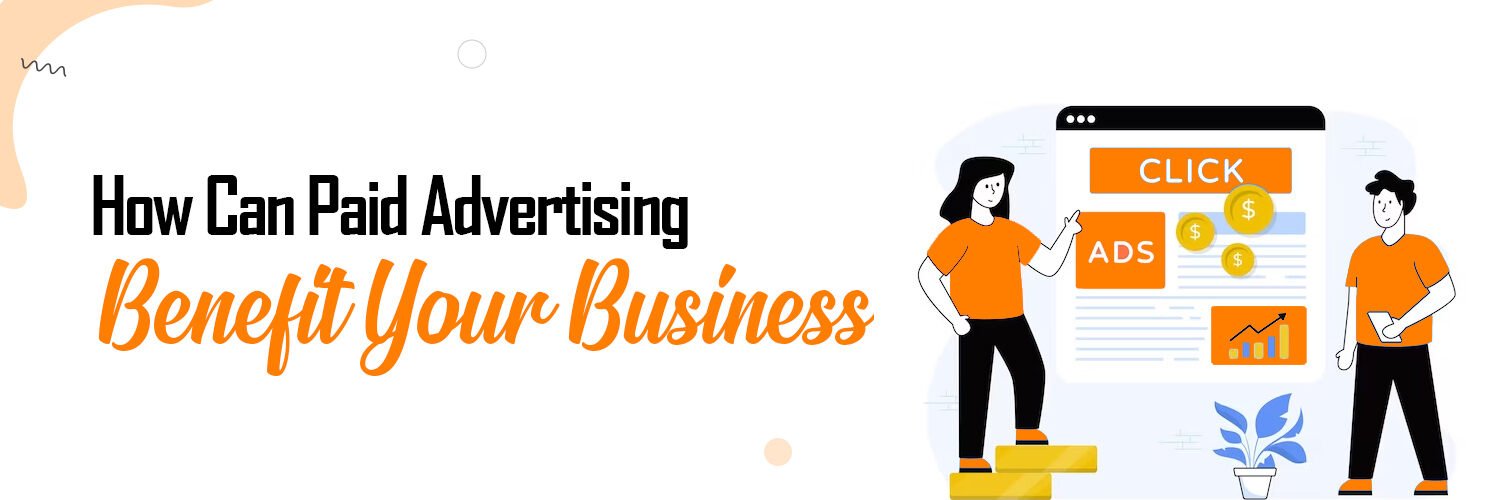
Paid advertising stands out as a potent force in the digital marketing landscape, offering several invaluable advantages for businesses. While it might require an investment, its benefits significantly outweigh the costs. Here’s how it can transform and elevate your business:
1. Guaranteed Reach
Paid advertising provides an immediate and assured reach to a vast audience. Unlike organic marketing, where reach is uncertain, paid ads enable businesses to connect swiftly with thousands of potential customers. This rapid and guaranteed exposure can be a game-changer for brand visibility and product promotion.
2. Precise Targeting
Modern paid advertising is a treasure trove of targeting opportunities. Businesses can focus on specific audiences through behavioural, interest, and keyword targeting. This means delivering ads directly to individuals who have demonstrated interest, visited your site, or shown relevant search intent. The precision helps in driving qualified leads and conversions.
3. Robust Measurement and Analytics
Paid advertising platforms come equipped with sophisticated measurement tools that allow businesses to gauge their return on investment (ROI) effectively. These platforms use cookies like the Meta pixel to track user interaction with ads and conversions. This data provides invaluable insights into the success of advertising campaigns, enabling businesses to fine-tune strategies for better performance.
4. Diverse Ad Types and Channels
Paid advertising spans across various channels, each offering distinct advantages:
Search Engine Ads: Leveraging search intent, these ads capture individuals actively seeking specific products or services, making them more likely to convert.
Social Media Ads: Using audience data, platforms like Instagram and TikTok deliver ads relevant to users’ interests, ensuring higher engagement.
Display Ads: These ads, spanning various formats, run across a network of websites, reaching a wide audience and enhancing brand visibility.
Hybrid Campaigns: Integrating across search, social, and display platforms, these campaigns adapt ad formats to suit the context of where they are displayed.
5. Key Advertising Platforms
While various platforms exist, two giants dominate the landscape:
Google Ads: Known for its search ads, Google offers a suite of products, including display and video ads. Its mature products and robust measurement tools like Google Analytics make it a powerful choice for advertising.
Meta Ads (Facebook and Instagram): Meta’s platforms have billions of daily active users, enabling precise targeting and diverse ad formats, all powered by the Meta pixel for in-depth tracking.
How Do You Create a Paid Advertising Campaign?
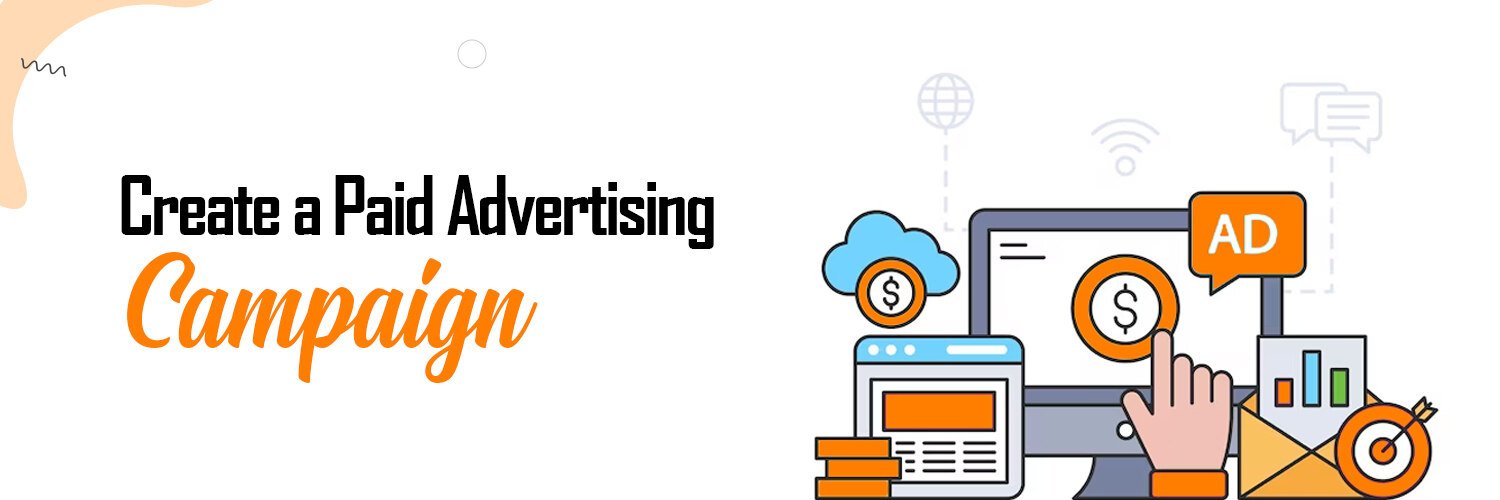
Creating a successful paid advertising campaign involves several key steps. Here’s a comprehensive guide to help you through the process:
1. Define Your Target Audience
Understanding your audience is crucial. Start by defining who your ideal customers are. Consider demographics, interests, behaviours, and location. Use tools like Google Analytics, social media insights, or customer surveys to gather relevant data. This information will shape the foundation of your campaign.
2. Develop Your Creative
Craft compelling and engaging content that resonates with your audience. Create ad copy, visuals, and videos that grab attention and communicate your message effectively. Ensure your creative aligns with your brand and the platform you’re using for advertising.
3. Choose the Right Platforms
Select the platforms where your audience is most active. Whether it’s Google Ads, Facebook, Instagram, LinkedIn, or other platforms, each has unique strengths. Tailor your content to fit the specific requirements and nuances of each platform.
4. Configure Your Tracking
Set up proper tracking mechanisms to monitor the performance of your ads. Use tools like Google Analytics, Facebook Pixel, or other analytics platforms to track conversions, click-through rates, and other relevant metrics. This data will guide your campaign optimization.
5. Set a Budget
Determine your budget for the campaign. Start with a manageable amount and gradually scale based on performance. Allocate funds strategically across platforms and campaigns, considering the potential ROI for each.
6. Launch and Monitor
Once everything is in place, launch your campaign. Monitor its performance closely. Keep an eye on key metrics such as click-through rates, conversion rates, cost per acquisition, and return on ad spend (ROAS).
7. Iterate and Optimize
Based on the data collected, iterate on your campaign. Tweak elements that could be performing better and double down on successful strategies. This might involve adjusting targeting parameters, modifying ad creatives, or reallocating the budget to high-performing ads or platforms.
8. A/B Testing
Continuously test variations of your ads to identify what works best. Experiment with headlines, visuals, calls-to-action, and targeting options to optimize your campaign’s performance.
9. Regular Reporting
Regularly generate reports to understand the effectiveness of your campaign. Analyze the data and use it to make informed decisions about future campaigns.
Are Paid Ads Worth it? Let’s Talk Benefits!
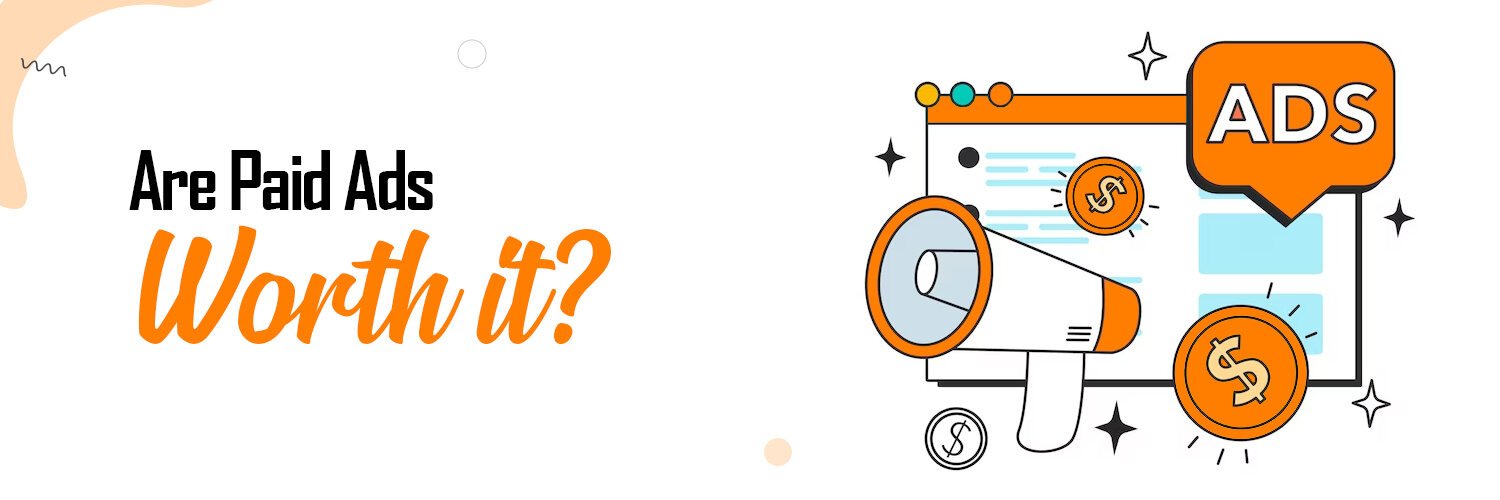
In the competitive digital marketing landscape, the debate over the value of paid advertising persists. The question often arises: are paid ads truly worth the investment? While they come with a price tag, their benefits can often outweigh the costs. Here’s a closer look at the advantages of leveraging paid ads as part of your marketing strategy.
1. Precision in Targeting
One of the most compelling advantages of paid ads is their precision in reaching your desired audience. Unlike organic methods like SEO or social media, where visibility is subject to algorithms and chance, paid ads provide control. You can define and refine your audience based on specific demographics, interests, and behaviours. This ability allows you to tailor your campaigns to reach those most likely to convert, resulting in more efficient and effective marketing.
2. Expedited Results
Speed is a crucial element in the fast-paced digital realm. Paid ads excel in delivering swift results. While organic methods like SEO and social media require time to gain traction, paid ads can instantly put your message in front of your audience. Whether launching a new product or promoting a time-sensitive offer, paid advertising can quickly generate traffic and conversions, providing immediate visibility and impact.
3. Measurable Performance
The beauty of paid advertising lies in its measurability. It offers detailed insights into campaign performance, allowing you to track and analyze data at a granular level. From click-through rates to conversion metrics, you can precisely measure the success of your ad campaigns. This data empowers you to optimize strategies in real time, adjusting targeting, messaging, and budget allocation for maximum effectiveness.
4. Cost-efficiency and Flexibility
While paid ads come with a cost, they offer high control and flexibility in budget allocation. You can set spending limits, target specific locations, and adjust campaigns in real time, optimizing your investment for maximum returns. The ability to refine your approach based on performance data enhances cost efficiency, ensuring that every dollar spent contributes to your marketing goals.
5. Enhanced Brand Visibility
Paid ads not only drive immediate traffic but also contribute to brand visibility. Consistent exposure through ad placements can reinforce brand recognition and trust among your target audience. Even if users don’t click on the ad immediately, the repeated exposure can lead to future conversions or engagement.
Top 4 Alternatives to Paid Ads (For The Business on a Budget)
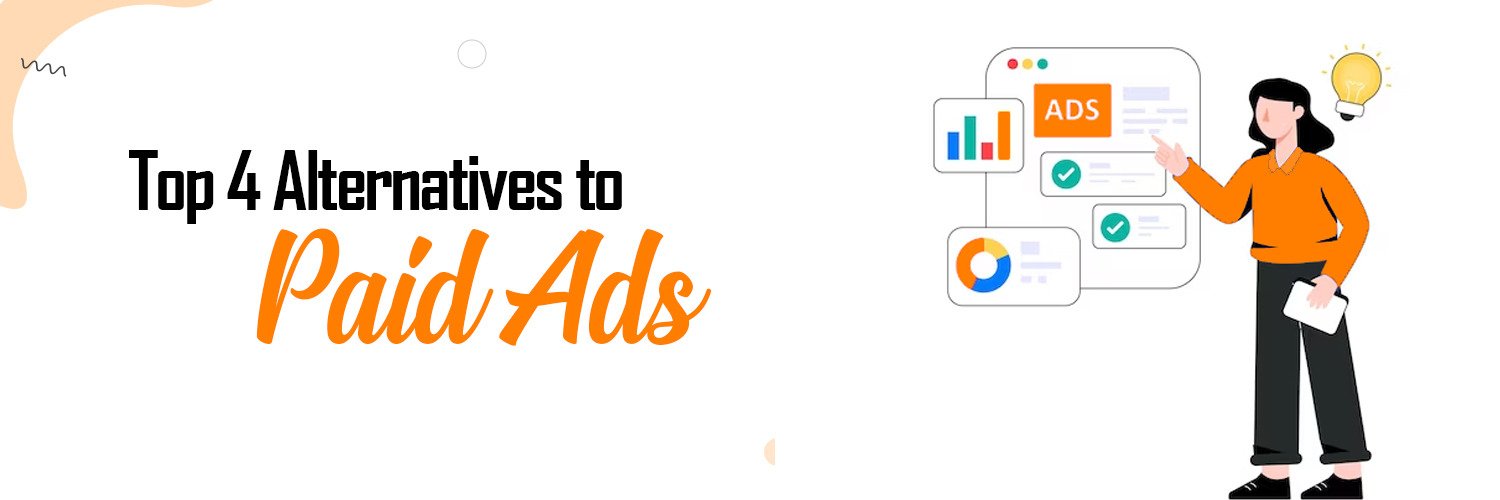
Paid advertising can yield great results, but for businesses watching their budgets, there are impactful alternatives that can effectively reach your audience without the price tag. Here are four cost-efficient strategies to consider:
1. Affiliate Referrals
Consider leveraging the power of influencers through affiliate referrals. This strategy involves collaborating with individuals who promote your product. You compensate sales based on their performance by tracking sales through unique codes or links. The beauty of this approach lies in paying only for actual sales driven, minimizing financial risk.
2. Email Marketing
Building and nurturing an email list might take time, but it remains one of the most cost-effective marketing strategies. Unlike social media, where organic reach can be limited, emails directly connect you with your audience at no additional cost. Consider offering incentives such as exclusive discounts or valuable content downloads to entice subscriptions.
3. YouTube Content Creation
YouTube isn’t solely a platform for paid ads. Creating engaging video content can reach a vast audience – 74% of U.S. adults. For businesses, especially bloggers, it’s an excellent space to share tutorials, reviews, or informative content. The key is producing valuable, shareable content that resonates with your target audience.
4. Organic Social Media
While organic reach on social media platforms might decline, it still presents a free channel to engage with your audience. Brands can capitalize on this by creating compelling, share-worthy content that resonates with their followers. Even though organic reach might not match paid ads, it’s an avenue to build relationships and community without additional costs.
Types of Paid Advertising
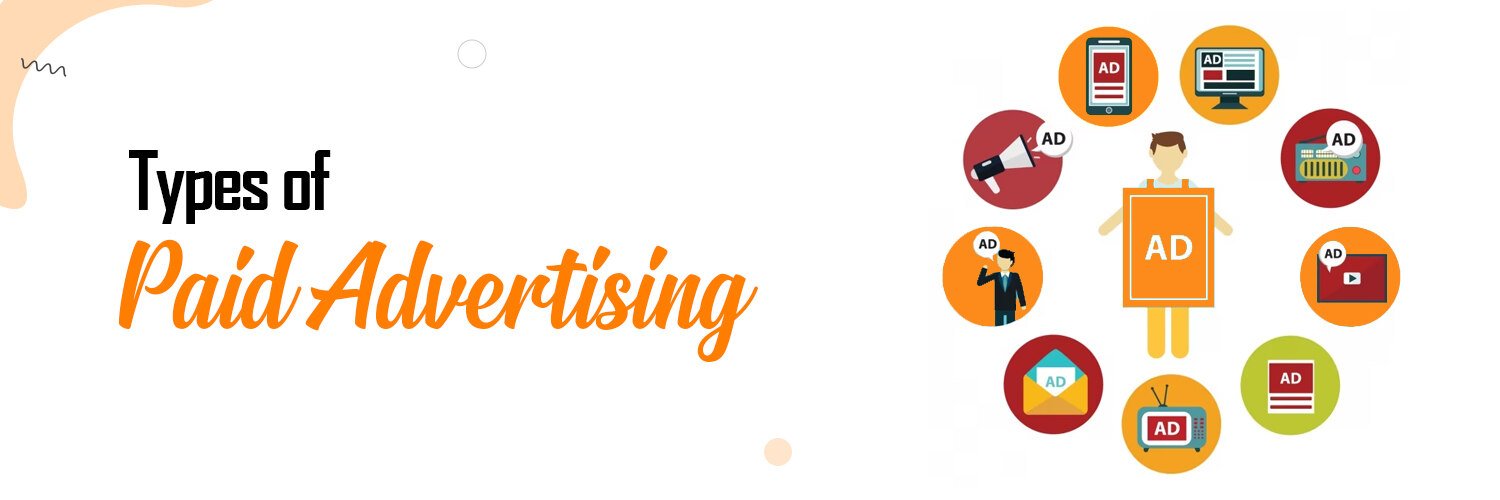
Paid advertising offers a diverse array of methods to reach potential customers. Here’s a breakdown of the various types:
1. Search Ads
Search ads appear in search results like those on Google or Bing. Businesses bid on keywords and pay for each click. Targeting high buyer intent keywords ensures better conversion rate optimization.
2. Display Ads
These ads are visible on various websites and can promote products or services. They’re found on platforms like NPR and can be used for cross-site promotions or monetization.
3. Social Media Ads
These are paid promotions on social platforms like Facebook, Twitter, and Instagram. They offer wide reach and precise targeting, displayed as sponsored posts or within feeds.
4. Email Sponsored Ads
These appear in users’ inboxes, tailored based on behaviour. Unlike typical email marketing, they don’t require having the user’s email addresses.
5. Google Shopping Ads
These search ads appear when users search for specific products, displaying images, pricing, and reviews. When appropriately formatted, some can be free; otherwise, payment is per click.
6. Video/Instream Ads
Video ads show at the start of a video, while instream ads appear within. With people spending considerable time watching digital videos, these ads can capture a vast audience.
7. Native Ads
These advertisements blend with a site’s content, seamlessly integrating into the platform. They can be sponsored blog posts, infographics, or videos, appearing like regular content.
8. Remarketing/Retargeting
These ads target users based on their behaviour rather than demographics. They aim to re-engage users who visited a website, downloaded content, or showed interest in products.
Conclusion
Paid advertising, a dynamic force in modern marketing, embodies precision, control, and measurable outcomes. Its diverse formats across platforms like search engines, social media, and display networks offer businesses a direct path to their target audience. The ability to refine strategies through analytics, reach guaranteed audiences, and swiftly measure ROI marks its undeniable value.
While paid advertising demands ongoing adaptation and optimization, its rapid impact, precision targeting, and cost-efficient flexibility position it as a cornerstone of digital marketing. In an era shaped by evolving algorithms and user behaviours, leveraging paid advertising remains an ever-evolving, powerful tool to drive brand visibility, engagement, and conversions.
Table of contents
- Why your startup should seek funding
- Do startups have difficulties raising money?
- At what stage can your business seek funding?
- The different investment options for startups
- Do startups have difficulties raising money?
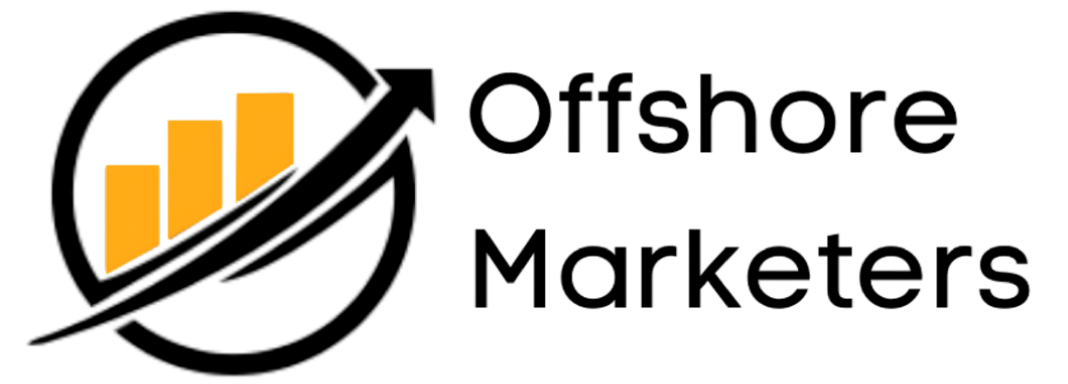


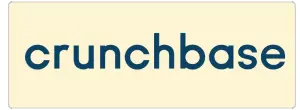



.png)